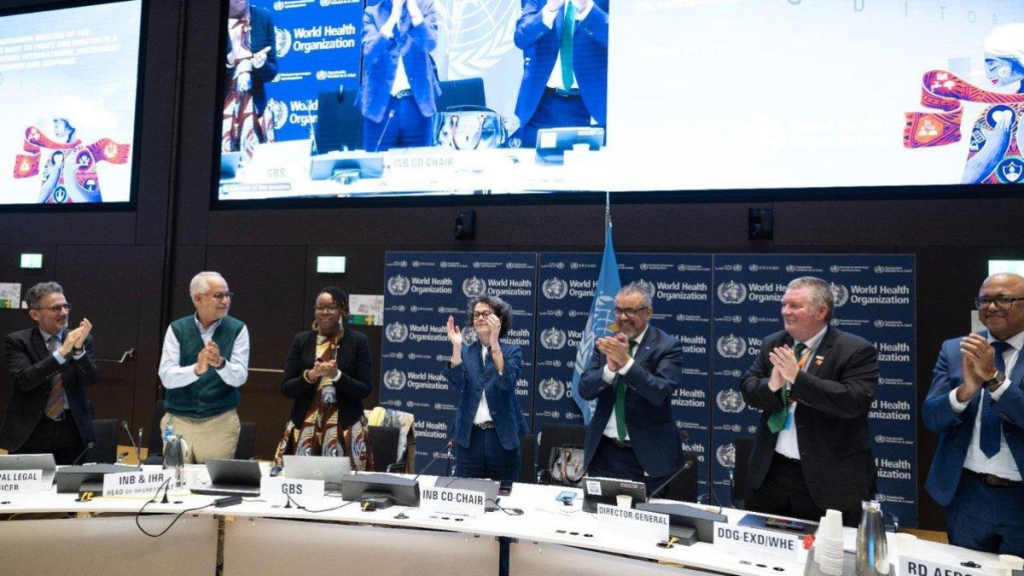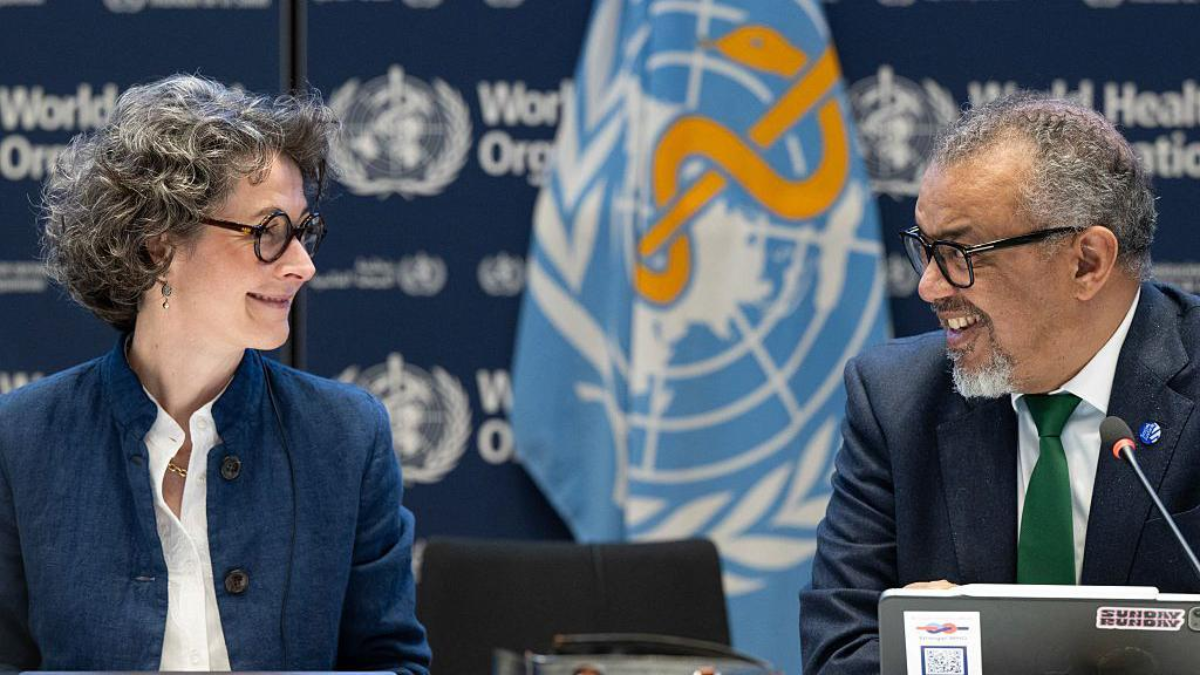In a milestone for global health diplomacy, member states of the World Health Organization (WHO) have reached a long-awaited agreement on a new pandemic preparedness treaty aimed at enhancing the world’s response to future health emergencies.
After years of contentious negotiations sparked by the global fallout from COVID-19, the agreement marks a coordinated effort to avoid the mistakes of the past and strengthen collective global health security.
The agreement—finalized just ahead of the World Health Assembly in Geneva—represents only the second legally binding treaty in the WHO’s 75-year history. It focuses on equitable access to medical tools, improved surveillance, and transparent collaboration between nations during times of global health crises.
Key Elements of the Pandemic Preparedness Treaty
The treaty includes several landmark provisions designed to prevent the inequities and supply chain breakdowns seen during the COVID-19 pandemic:
- Equitable Access to Vaccines and Treatments:
One of the core components of the treaty ensures that WHO will be guaranteed access to 20% of pandemic-related medical tools, including vaccines, diagnostics, and treatments. Of this, 10% will be provided free of charge, and the remaining 10% will be available at affordable prices. This provision is seen as a direct response to the “vaccine apartheid” experienced by low-income nations during COVID-19. - Pathogen Sharing Framework:
The agreement establishes a new global system for timely and transparent sharing of pathogens and genomic data. In return, countries sharing these pathogens will receive access to the benefits arising from their use, such as vaccines and medications, through a “benefit-sharing” model. This system is intended to incentivize collaboration and rapid response when outbreaks begin. - International Health Regulations (IHR) Revisions:
Alongside the treaty, member states also approved amendments to the International Health Regulations (IHR). These include the formal recognition of “pandemic emergencies” as a distinct category and the creation of a new committee to improve implementation and compliance across nations.
Addressing Global Inequities
The pandemic preparedness treaty takes a strong stance on addressing global disparities that became glaringly evident during the COVID-19 crisis. Developing countries were among the last to receive vaccines and often lacked access to life-saving equipment due to supply hoarding by wealthier nations.
To remedy this, the treaty calls for:
- Diversification of R&D and Manufacturing Hubs:
Instead of centralizing research in a handful of countries, the agreement promotes investment in regional manufacturing and research capabilities. This strategy is expected to increase self-reliance and reduce dependency on a limited number of suppliers. - Support for Developing Nations:
A new financing mechanism has been introduced to help low- and middle-income countries build resilient health systems. The aim is to ensure these nations can detect outbreaks early and respond effectively without having to rely solely on external aid.
Controversy and Political Resistance
Despite the treaty’s broad support, not all nations have welcomed it. Notably, the United States and Argentina have announced that they will not be parties to the final agreement. This decision has drawn criticism from global health advocates, who argue that a lack of participation from major players weakens the treaty’s potential impact.
Opposition to the treaty in the U.S. has been fueled by misinformation and political rhetoric suggesting the WHO would infringe on national sovereignty. However, WHO officials have repeatedly emphasized that the treaty respects national authority and relies on voluntary compliance, with mechanisms for arbitration in cases of disputes.
Dr. Tedros Adhanom Ghebreyesus, WHO Director-General, called the agreement “a triumph of international cooperation,” adding that the treaty “reflects the determination of member states to protect their people and prevent the devastating impact of future pandemics.”

Next Steps and Ratification Process
While the agreement is historic, it is not yet the law of the land for most countries. Member states must now present the treaty to their respective governments for ratification. The goal is to formally adopt the treaty during the next World Health Assembly in Geneva.
Legal experts have noted that this treaty could be a major turning point in international health governance—similar in stature to the WHO’s Framework Convention on Tobacco Control, adopted in 2003.
However, some observers remain cautiously optimistic, pointing out that the effectiveness of the treaty will ultimately depend on political will, sustained funding, and the ability to hold countries accountable.
Looking Ahead
With global crises such as climate change, population growth, and increased human-wildlife interaction raising the risk of future pandemics, the WHO treaty arrives at a crucial moment. The success of the agreement could pave the way for faster, more equitable, and more effective pandemic response strategies worldwide.
Although questions remain about implementation and enforcement, the agreement sends a clear message: the world is willing to work together to prevent another global health catastrophe.
As Dr. Tedros concluded, “If COVID-19 taught us anything, it’s that no one is safe until everyone is safe. This treaty is a critical step toward making that statement a reality.”
For more details on the WHO’s efforts to improve global pandemic preparedness, visit WHO’s official update on IHR amendments.
Disclaimer – Our team has carefully fact-checked this article to make sure it’s accurate and free from any misinformation. We’re dedicated to keeping our content honest and reliable for our readers.
